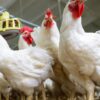Why you should construct a Shrimp Farm?
Shrimp Aquaculture at Global LevelNearly 55% of shrimp are produced by shrimp farming. Shrimp farming has become a business venture for many nations such as China, India, Singapore, and many other countries. Shrimp is a marine creature and it carries almost 90% of the protein in its body. Additionally, nutritionists argue that seafood containing shrimp has impressive health benefits (Brianna Elliott).
Shrimp farm has grown to 10.6 B USD (WorldWildlifeForum). It is one of the fastest-growing marine products on the global scale with an annual growth rate of 10pc. With such impressive benefits, it is important to give a bird’s eye view of shrimp. The first question that arises is, What is shrimp farming?
What is Shrimp Farming?
Shrimp farming is a business aquaculture technique to produce shrimp in a farm, pond, or facility. The prawn or shrimp are produced for human consumption and commercial activities.
How to Start a successful Shrimp farm?
A Guide To Shrimp Farming
Prepare Shrimp Ponds or Barrels
Initially, a shrimp farmer should build ponds or barrels. These ponds should be constructed on a workable design. Flooding and surface runoff (rain) should not affect these areas. The ponds should have a depth of 1 to 5 meters and an area of 1 to 5 acres. Optimal depth is necessary for shrimp to grow. They also need oxygenated water to multiply. Therefore, they should not be harvested in a closed apparatus. The ponds should be installed with internal and external aerators.
Buy Baby Shrimp
Afterward, the shrimp farmer should buy shrimps for the hatchery. This is the trickiest part of shrimp production because it requires expertise, knowledge, and education. Nonetheless, one rule of thumb should be kept in mind, the age of shrimp hatching. The baby shrimp should be brought vis-à-vis mature shrimps. Because it directly affects the reproductive capacity and protein value of a shrimp. In this case, a baby shrimp outraces an adult shrimp.
Maintain Optimal Environment
Later, it is crucial to maintain an optimal environment in the shrimp pond. A feasible and friendly ecosystem familiarizes shrimp with their new environment. Shrimp are sea creatures that can adapt to the ecology of the ocean. They can only survive between 50-70 F temperature of the water. Also, they grow when the water is PH 6.5 to 9.0. In the same way, the shrimps can get a suitable environment to breed and multiply.
Shrimp Nutrition
Furthermore, it is very important to nourish shrimp with suitable food. Shrimp get nourishment from microbial organisms. Algae is one of the natural foods consumed by shrimp. Therefore, shrimp ponds should be nourished with algae. In the same way, shrimps have a predilection for vegetables like cucumbers and Spinach. The international aqua-culturists recommend that shrimp food must not carry protein more than 38pc. A small piece of these vegetables should be fed to shrimps. shrimps should be nourished twice a day before they gain a weight of 05 grams. Additional nourishment can increase their weight. As shrimps are nighty creatures, they must be given food at dusk.
Harvest Adult Shrimps
Fortunately, shrimp can grow year-round. Their peak breeding seasons vary from country to country. After breeding season, shrimps should be harvested at a reasonable time. A shrimp of 05 grams is an adult one. It carries 99 calories. It carries almost 50pc of proteins required for the human body. For instance, shrimp have peak breeding season in the USA from February to April and August to October.
Tips for Shrimp Farming
Although shrimp farming is a profitable and sustainable business, it is vulnerable to many diseases. Excess of fecal or feed matter can cause the death of shrimps. Excess waste material decomposes into toxic compounds like Ammonia. These compounds are then ingested by shrimp. Major symptoms of toxic materials are noticeable on the surface of the shrimp-like, yellow spots and quick death. This problem can be solved by excreting waste materials from shrimp ponds or barrels within a week. Also, other treatment materials like probiotics, vitamins, etc. can be added to water. These positive microbes kill dangerous microbes and ensure the good health of shrimps.
Advantages of Sustainable Shrimp farming
Sustainable Production
Shrimp farming is an eco-friendly method. It does not consume any fossil fuels. It uses a pond, shrimp, and water. The business structure of shrimp farming does not deplete any natural resources.
Profitable Business
Shrimps are one of the most profitable sea creatures. Typically, an adult shrimp costs 06USD (IndexMundi2020). Generally, it is estimated that an investment of 1000 USD on shrimp farming gives an annual turnover of 700 USD. This is due to the fact that shrimps are used in food, pharmaceutical, and the medical industry. Under developing nations like India, Bangladesh and Nepal have invested hugely in the business of shrimp farming due to its profitable turnover.
Healthy Food
Shrimp make healthy food. The shrimp are protein-rich sea creatures. A fully grown shrimp proved almost 100 calories of energy to a human body. That is why it one of the most consumed seafood in the world. During the COVID19 outbreak, its consumption rate grew many times because it provided healthy nutrients for consumers.
Disease Control
Eating shrimp can control the brain and heart health. It has mega-3 fatty acids and the antioxidant astaxanthin (6 , 11 , 12 , 13 ). These healthy nutrients can prevent the accumulation of cholesterol, and fats. It can prevent brain stroke and artery blockage.
Conclusion
The practice of shrimp farming is very beneficial in economic, physical and ecological aspects. It demands less and earns more. Above all, it is a profitable business.
(PostScript: Reader can share this Invivo Biosciences blog or comment to give his valuable feedback)
References
Brianna Elliott, RD . (2018). Is Shrimp Healthy? Nutrition, Calories, and More. Healthline, 03.
Forum, W. W. (2018). Farmed Shrimp. WWF, 1.
IndexMundi. (2020). Shrimp Monthly Price – US Dollars per Kilogram. IndeMundi.



